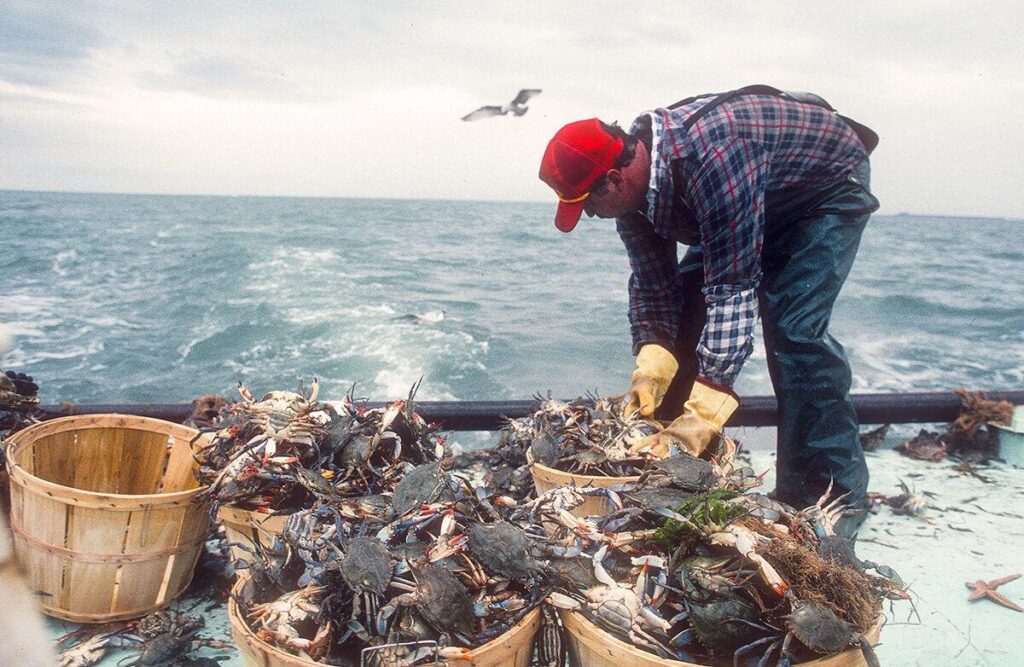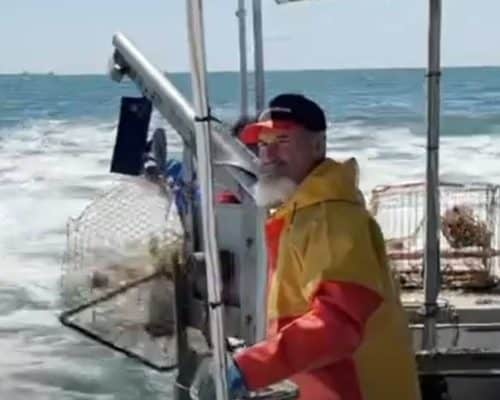Fifteen years after Virginia shut down its winter blue crab harvest, the industry is seeking to claw its way back into the season—at least on an experimental basis.
In 2007, the Chesapeake Bay crab population cratered at an estimated 251 million, prompting a federal disaster declaration the next year. Alarmed, Maryland and Virginia regulators enacted a series of sweeping measures aimed at protecting reproductive females through spawning.
One of the key moves in Virginia was to ban winter dredging. The practice, which involves dragging heavy, metal traps behind a boat to scoop up dormant crabs, was already illegal in Maryland.
Over the past decade, annual surveys have counted an average of 392 million crabs per year. Some crabbers in Virginia say the prized crustacean has recovered enough to warrant reopening the winter dredge season on a small scale.
In August, the state’s industry-dominated Crab Management Advisory Committee formally asked officials with the Virginia Marine Resources Commission to propose a regulatory framework that would allow a modest number of boats to participate.
At the time of the 2008 ban, there were 58 holders of winter dredge permits. The committee has recommended restricting the new fishery to no more than six entrants.
“Watermen really need something like this to lean on,” said James “J. C.” Hudgins, president of the Virginia Watermen’s Association. “I think it’s something we could look at on a very limited basis, a managed basis.”
It’s too late to get the proposal approved in time for this winter, said Pat Geer, head of fisheries management for the VMRC. The earliest it could be in place would be winter 2024–25.
But he cautioned that the proposal, if finalized, won’t be possible without concessions.
Since 2008, the three jurisdictions that oversee the Baywide crab fishery—Maryland, Virginia and the Potomac River Fisheries Commission—have enforced a 34 percent reduction in the female crab harvest. If Virginia increases its harvest in the winter, the state will have to reduce quotas during other times of the year, Geer said.
Those cuts would almost certainly impact the commercial crab pot fishery, which represents 97% of the state’s crab take. In that fishery, watermen place bait in cages and sink them to the bottom, returning a day later to retrieve crabs that have been lured inside.
The commercial crab pot season typically extends from March 17 to Nov. 30. The VMRC’s main board agreed in September to keep the season open until Dec. 16 this year to allow crabbers to take advantage of better pricing during that time of year.
One of the main reasons that regulators closed the winter dredge season was to relieve pressure on adult female crabs, Geer said. They would typically account for about 90 percent of the winter harvest.
Why? At that time of year, females migrate to the southern end of the Bay to release their eggs, Geer explained.
The crab board’s members were somewhat divided over the winter dredge proposal during their August meeting, voting 6–3 in its favor.
Nathan Reynolds, a crabber based in Cape Charles who is not a board member, said he worries that the reintroduction of winter harvests will be offset by deep cuts in bushel limits on crab pots.
“In the big picture, we’re going to shoot ourselves in our own foot,” he told the advisory group.
Several crabbers said they would prefer to see the crab pot season extended to year-round. Because of climate change, the lower Bay’s waters are warming earlier in the year and staying warm later in the fall. As a result, crabs are spending less time hibernating in the mud, where dredges are the only device that can reach them.
Geer poured cold water on that idea, for now: “Water temperatures are changing. We may look into those things, but I think opening it up on a year-round basis today is probably not the path we want to go down.”
This article originally appeared on bayjournal.com Oct. 23, 2023.




